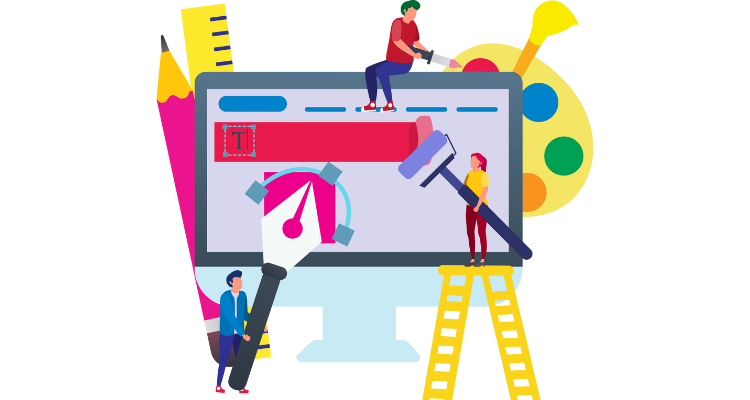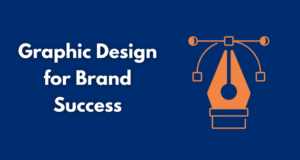A strong online presence depends on more than words, it depends on visuals that communicate clearly and instantly. Graphic design has become a key part of how businesses present their identity, connect with audiences, and stand out in a space where attention fades fast.
The visual language of brands now carries unprecedented weight in capturing attention, building trust, and driving conversions across increasingly crowded digital landscapes.
Understanding how to harness design’s full potential isn’t just about creating beautiful visuals, it’s about architecting experiences that resonate, engage, and ultimately transform casual viewers into devoted advocates.
Table of Contents
ToggleThe Strategic Foundation of Visual Communication

Graphic design serves as the silent ambassador of your brand, communicating values, personality, and promises before a single word is read. In digital environments where users make snap judgments within milliseconds, the strategic deployment of visual elements becomes the difference between engagement and abandonment.
This reality has elevated design from a supporting role to a primary growth driver, particularly for businesses navigating competitive online markets.
The most successful digital brands recognize that design thinking must permeate every touchpoint. From website interfaces to social media graphics, email campaigns to product presentations, visual consistency creates cognitive ease for audiences.
This psychological comfort translates directly into measurable business outcomes: longer site visits, higher engagement rates, and improved conversion metrics. Yet achieving this level of sophistication requires more than basic design skills, it demands understanding the intersection of aesthetics, psychology, and technology.
Design as a Conversion Catalyst
Modern graphic design operates within complex ecosystems where user behavior data informs creative decisions. Platforms like Ntice demonstrate this evolution perfectly, showing how intelligent design systems can adapt to user preferences while maintaining brand integrity. The integration of analytics with design execution allows brands to move beyond subjective preferences toward data-validated visual strategies.
Consider the journey of a potential customer encountering your brand for the first time. The color palette triggers emotional responses backed by color psychology research.
Typography choices signal professionalism or creativity, urgency or calm. Layout hierarchies guide the eye through carefully orchestrated information flows. Each element works in concert, creating what behavioral economists call “choice architecture”, subtly influencing decisions without limiting freedom.
Smart businesses leverage these principles systematically. A/B testing different design treatments reveals which visual approaches drive desired actions. Heatmap analysis shows where attention naturally gravitates, informing layout optimizations. Conversion funnel mapping identifies visual friction points where users abandon their journey. This empirical approach to design removes guesswork, replacing intuition with measurable performance data.
The Creator Economy and Visual Storytelling
The explosive growth of creator-driven businesses has illuminated design’s commercial power in unprecedented ways. Platforms supporting independent creators, such as Fanvuemodels, showcase how strategic visual presentation directly impacts revenue generation. Creators who master personal brand aesthetics consistently outperform peers with comparable content quality but weaker visual strategies.
This phenomenon extends beyond individual creators to businesses of all sizes. Visual storytelling, the art of conveying narrative through imagery, typography, and layout, creates emotional connections that transactional messaging cannot achieve. Brands that invest in cohesive visual narratives build communities rather than customer bases, fostering loyalty that transcends price competition and market volatility.
The technical execution matters tremendously here. Poorly optimized images slow page loads, increasing bounce rates. Inconsistent styling across platforms fragments brand recognition. Inaccessible design excludes potential customers with disabilities. Conversely, technically excellent design implementation, fast-loading, responsive, accessible, and consistent, creates frictionless experiences that feel effortless to users while requiring significant expertise to execute.
Emerging Technologies and Design Innovation
The integration of artificial intelligence with design workflows represents both opportunity and challenge. AI tools can accelerate production, generate variations, and handle repetitive tasks, freeing designers to focus on strategic and creative aspects. However, maintaining authentic human perspective remains crucial. Audiences increasingly detect and reject overly automated content that lacks genuine creative vision.
The most effective approach combines technological efficiency with human insight. AI handles scale and variation while human designers ensure emotional resonance, cultural sensitivity, and brand authenticity. This hybrid model allows businesses to maintain quality while meeting the content volume demands of modern digital marketing.
Responsive and adaptive design frameworks have also revolutionized how brands present across devices. Mobile-first thinking isn’t optional, it’s foundational. With the majority of digital interactions occurring on smartphones, designs must excel on small screens while scaling gracefully to tablets and desktops. This requires modular thinking, flexible grid systems, and thorough testing across device ecosystems.
Building Sustainable Visual Systems
Long-term digital success requires systematic approaches to design management. Brand style guides, component libraries, and design systems ensure consistency across teams and platforms. These frameworks prevent the visual fragmentation that undermines brand recognition while enabling efficient content production at scale.
Documentation becomes invaluable as organizations grow. When multiple team members create content, clear guidelines around color usage, typography, spacing, and component application maintain coherence. Version control systems track design evolution, preventing regression while enabling continuous improvement based on performance data.
The investment in these systems pays compound returns. Onboarding new team members accelerates dramatically with comprehensive design documentation. External partners and agencies can maintain brand standards without constant oversight. Most importantly, audiences experience consistent brand expressions that reinforce recognition and trust over time.
Measuring Design’s Business Impact
Quantifying design’s contribution to business outcomes transforms it from cost center to profit driver in organizational thinking. Key performance indicators should extend beyond vanity metrics to actionable insights. Time on page, scroll depth, click-through rates, conversion rates, and customer lifetime value all connect directly to design effectiveness.
Advanced attribution modeling reveals how visual improvements in one area cascade through customer journeys. Perhaps redesigning email templates increases click-through to landing pages, where refined visual hierarchies boost form completions, ultimately impacting revenue. Tracking these connections demonstrates ROI and justifies continued investment in design excellence.
Conclusion: Design as Competitive Advantage
As digital channels saturate and attention becomes the scarcest resource, graphic design emerges as a primary competitive differentiator. Brands that treat design strategically, investing in systems, talent, and technology that elevate visual communication, position themselves for sustained growth.
The digital potential of any business ultimately manifests through the quality of its visual presence, making design expertise not merely valuable but essential for market success in the coming decade.









